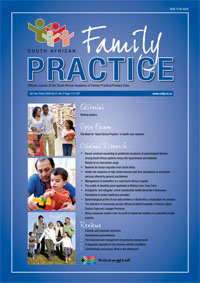The Retention of Community Service Officers at District Hospitals in KwaZulu Natal, Eastern Cape and Limpopo Provinces
Keywords:
Community service, recruitment, retention, Human resources for health
Abstract
Background: Community service (CS) is an effective recruitment strategy for underserved areas, using legislation as the driver, however it is not a retention strategy. By the end of each year, most CS officers working in district hospitals (DH) are skilled, valued and valuable members of the health team, able to cope with the demands of working in the public health service within the resources available at DHs. Their exodus at the end of each annual cycle represents a net loss of valuable skills and experience by the public service, measured by the time and effort required to orientate and induct the following cohort of CS officers. This in turn has a negative effect on the level of service delivery and the quality of patient care. This study sought to understand the motivations of CS officers to continue working at the same DH for a subsequent year after their obligatory year was over. The objectives were to determine the number of CS officers who actually remained at the same DH after completing their CS in 2002, the major factors that influenced them to remain, and factors that would encourage the 2003 cohort of CS officers to remain for an additional year at the same DH. Methods: A descriptive cross-sectional study design was employed using qualitative methods with the cohort of CS officers who had completed their compulsory CS year in 2002 and who were still working at the same DH in July 2003. This was followed by a quantitative survey of CS officers doing their CS at DHs in KwaZulu-Natal (KZN), Eastern Cape (EC) and Limpopo Province (LP) in November 2003. Results: 22/278 (8%) of the 2002 cohort of CS officers in KZN, EC and LP remained at the same DH in the year following their CS. The reasons given, in order of decreasing priority, were that they were close to home, had been allocated as part of their CS, were personally recruited, had bursary commitments, had heard about the hospital from friends, had visited the hospital prior to starting community service, and had visited as a medical student. Four others did not specify reasons. In the larger quantitative study 150 / 221 questionnaires were returned. More than 80% of the respondents felt that there had been opportunities to develop confidence in their own ability to make independent decisions, that they had had good relations with the hospital staff, and that they had been able to make a difference in health care delivery. Between 67% and 76% of respondents felt that they were providing a good standard of care, that there were learning opportunities, that they were doing worthwhile work and saw CS as excellent work experience. However only 52% of respondents felt that there had been opportunities for personal growth, 38% felt that appropriate equipment was available, 37% had a supportive mentor figure and 29% felt that there were adequate levels of staffing at the hospital. In total 24 (16%) of the 150 who responded to the questionnaire indicated a willingness to remain at the same DH after completion of their year of CS. The intention to continue for a further year was statistically significantly associated with the following factors: ethnic group, province, rural origin, allocation priority and bursary commitment. Conclusions: The retention in the same DH of only 8% of the CS officer cohort in 3 rural provinces indicates a serious loss of skills on a recurrent annual basis. Local hospital management can do much to strengthen the factors that would attract CS officers to stay on by improving orientation, mentoring, teamwork, professional development opportunities, medical equipment and accommodation.
Published
2009-04-25
Section
Original Research
By submitting manuscripts to SAFP, authors of original articles are assigning copyright to the South African Academy of Family Physicians. Copyright of review articles are assigned to the Publisher, Medpharm Publications (Pty) Ltd, unless otherwise specified. Authors may use their own work after publication without written permission, provided they acknowledge the original source. Individuals and academic institutions may freely copy and distribute articles published in SAFP for educational and research purposes without obtaining permission.

